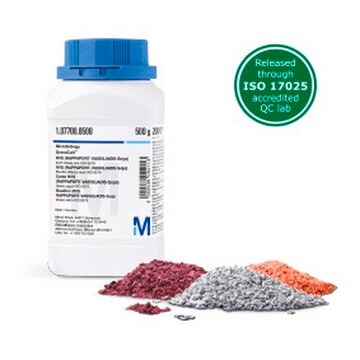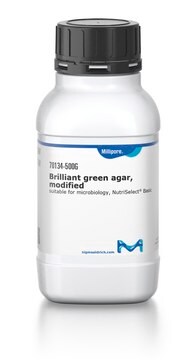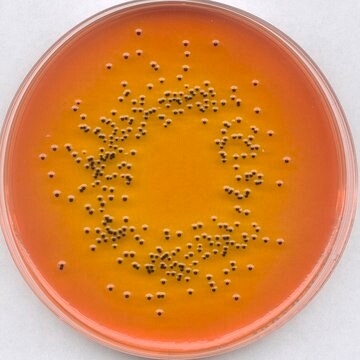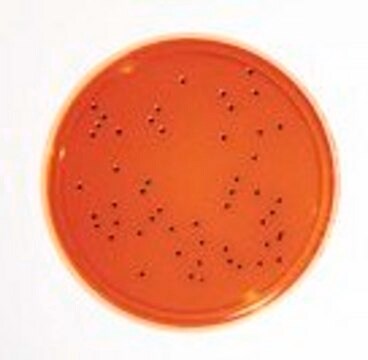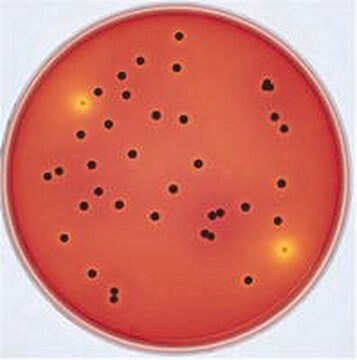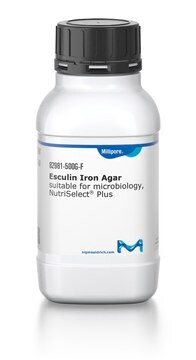95586
XLD Agar
NutriSelect® Basic, suitable for microbiology
Sinónimos:
Xylose Lysine Deoxycholate Agar
About This Item
Productos recomendados
esterilidad
non-sterile
Nivel de calidad
formulario
powder
caducidad
limited shelf life, expiry date on the label
composición
agar, 15 g/L
ammonium ferric citrate, 0.8 g/L
lactose, 7.5 g/L
L-lysine hydrochloride, 5 g/L
phenol red, 0.08 g/L
sodium chloride, 5 g/L
sodium deoxycholate, 2.5 g/L
sodium thiosulfate, 6.8 g/L
sucrose, 7.5 g/L
xylose, 3.5 g/L
yeast extract, 3 g/L
fabricante / nombre comercial
NutriSelect® Basic
técnicas
microbiological culture: suitable
pH final
7.4±0.2 (25 °C)
aplicaciones
environmental
food and beverages
veterinary
microbiology
idoneidad
selective and differential for Klebsiella spp.
selective and differential for Proteus spp.
selective and differential for Salmonella spp.
selective and differential for Shigella spp.
selective and differential for enterobacteriaceae
Aplicación
Nota de preparación
Nota al pie de página
The designations basic, plus, or prime are added to indicate the quality control level, from basic quality control to standard QC plus to prime for full regulatory compliance.
Información legal
Código de clase de almacenamiento
11 - Combustible Solids
Clase de riesgo para el agua (WGK)
WGK 2
Punto de inflamabilidad (°F)
Not applicable
Punto de inflamabilidad (°C)
Not applicable
Equipo de protección personal
Eyeshields, Gloves, type N95 (US)
Elija entre una de las versiones más recientes:
¿Ya tiene este producto?
Encuentre la documentación para los productos que ha comprado recientemente en la Biblioteca de documentos.
Los clientes también vieron
Artículos
Salmonella contamination is the second leading cause of food-borne illness worldwide. Controlling outbreaks of Salmonella is an important task for food regulators, restaurants and the food industry in general. The Salmonella family includes over 2,300 serotypes of bacteria, but two types, Salmonella enteritidis and Salmonella typhimurium, are responsible for about half of all human infections. Most outbreaks of Salmonella are traced back to dairy, poultry and meat products, but Salmonella can grow on nearly any food. Chicken, eggs and their derivative products are particularly high risk.
Nuestro equipo de científicos tiene experiencia en todas las áreas de investigación: Ciencias de la vida, Ciencia de los materiales, Síntesis química, Cromatografía, Analítica y muchas otras.
Póngase en contacto con el Servicio técnico
